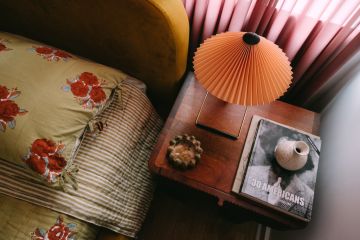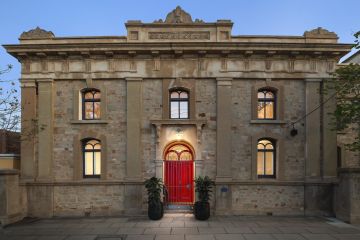How to navigate partners who have clashing design styles

Just as hairdressers are proxy therapists, being a designer is a little bit like being a mediator. Often a client isn’t one client, it’s two. And more often than not one, or both of them, will have strong opinions about their home and sometimes these strong opinions don’t align. This can spell trouble in paradise, not just for the clients’ relationship but also for the client-designer relationship.
There are several approaches to solving the problem, you can simply gang up with one client against the other – that’s called bulldozing, and can give you a swift resolution in the short term, but will only lead to unhappy clients and bad results all around.
The better solution is to assess what is happening in the conflict, and pull it apart to better put it back together again. As a rule, wherever possible I try to get the clients to agree that I’ll have one point of contact, not two. They can discuss things between themselves and more often than not come to me having resolved any discrepancies.
Sometimes though you’ll need to do the heavy lifting, and if this is a scenario you find yourself in – either as the client of a designer or with your own partner – here’s my guide to resolving the conflict.
Honesty policy
Aesthetically two people can perceive the same thing in completely different ways. Just like people love different types of music, art and design are subjective and an idea can be loved by one and loathed by another. Start there. Something loathed by one partner really does have to be surrendered by the party that likes them. However, if one partner loves and the other loathes, everyone has to discuss which emotion is stronger.
- Related: Transforming an awkward nook into a calming study space
- Related: Three bedroom trends that are past their use-by date
- Related: The ‘it’ window treatment rising in popularity
You can’t miss out on something because your partner is simply not a big fan of it, just as you can’t make someone live with something they truly hate just because you think it’s good. Whoever has the strongest reaction wins in this instance and everyone needs to be honest.
Come together
If two partners like different styles you have two choices: either blend the styles, if appropriate – I’ve seen mid-century classic furniture and art work beautifully in a contemporary revision of a heritage building that was also full of antiques.
If the styles are completely incompatible, make a space for one partner where they can indulge their aesthetic completely.
Look for ways to integrate small nods to their preferences throughout the rest of the home, which will have been styled in line with the other partner’s needs.
If that solution doesn’t work and both have wants in equal measure –with the result being a mash-up of two incompatible design styles – well, you need to cross your fingers and hope for the best.
Look at ways to tie differing styles and items together, such as having one partner’s prized artwork as a centrepiece in a room, while most of the furniture and decor reflect the other partner’s tastes.
Make a reading nook for one partner’s favourite chair, in a room that’s mostly furnished in an opposing style. This approach can work, but is the hardest to pull off.
Art of compromise
The means to finding middle ground is to pull apart the objectives, and objections, of both people who will live in the home. Find solutions that might not be the most desireable response in the eyes of either party, but neatly bridges the divide between them.
Creating a less divisive solution can run the risk of pleasing no one, if not managed well. However, if done correctly, a diluted interior design that includes a handful of treasured elements from each side, can give the most coherent result, while still demonstrating everyone’s unique style.
We recommend
States
Capital Cities
Capital Cities - Rentals
Popular Areas
Allhomes
More







